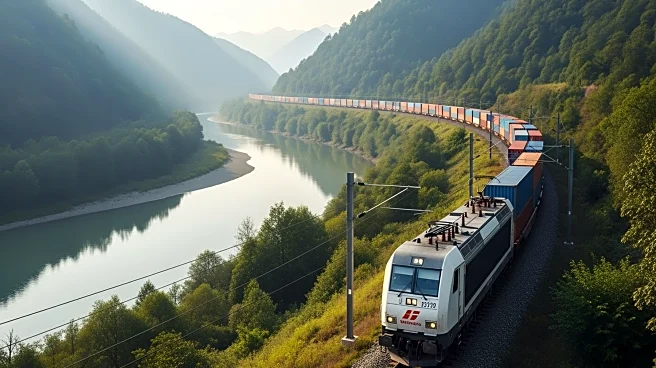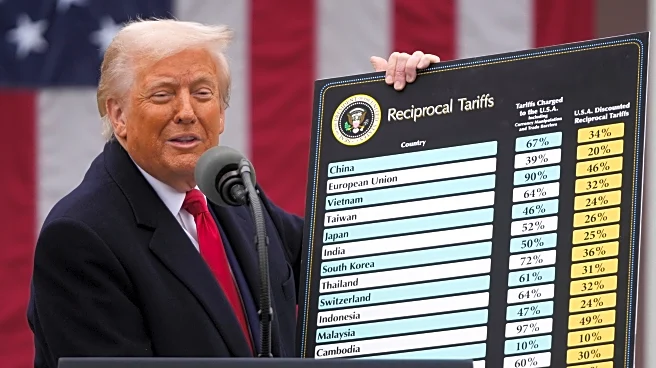What's Happening?
China is constructing a rail-powered trade corridor in its western interior, centered around Chongqing, to serve as an alternative to traditional maritime routes like the Suez Canal. This initiative, part of China's Belt and Road Initiative, aims to reduce
reliance on strategic maritime chokepoints and enhance trade efficiency. The corridor allows goods to move from Southeast Asia to Europe in under two weeks, significantly cutting shipping times. The development is a response to vulnerabilities exposed by the COVID-19 pandemic and U.S.-China trade tensions, emphasizing strategic autonomy and diversification of trade routes.
Why It's Important?
This development is significant as it represents China's strategic shift towards reducing dependency on maritime routes that are susceptible to geopolitical tensions, particularly those controlled by U.S. and allied naval forces. The new corridor enhances China's trade resilience and could potentially alter global supply chain dynamics. It also highlights China's commitment to infrastructure investment and regional partnerships, which could influence global trade patterns and economic relations. The initiative may impact industries reliant on Chinese exports, such as electronics and automotive sectors, by providing more reliable and faster shipping alternatives.
What's Next?
China is likely to continue investing in alternative trade routes, such as the Middle Corridor, to further reduce reliance on Russian transit routes, which have been destabilized by geopolitical tensions. The success of these initiatives will depend on overcoming logistical and customs challenges. Additionally, China's efforts to streamline border logistics with ASEAN partners will be crucial in maintaining the viability of rail freight as a long-term alternative to ocean shipping. The development of inland economic hubs like Chongqing could serve as a model for other regions in China, potentially reshaping the country's economic landscape.
Beyond the Headlines
The shift towards inland trade routes reflects a broader trend of countries seeking to enhance economic security and autonomy in response to global uncertainties. This move could lead to a reevaluation of global trade dependencies and encourage other nations to explore similar strategies. The environmental benefits of rail over maritime shipping, such as lower emissions, may also gain attention as countries strive to meet climate goals.















